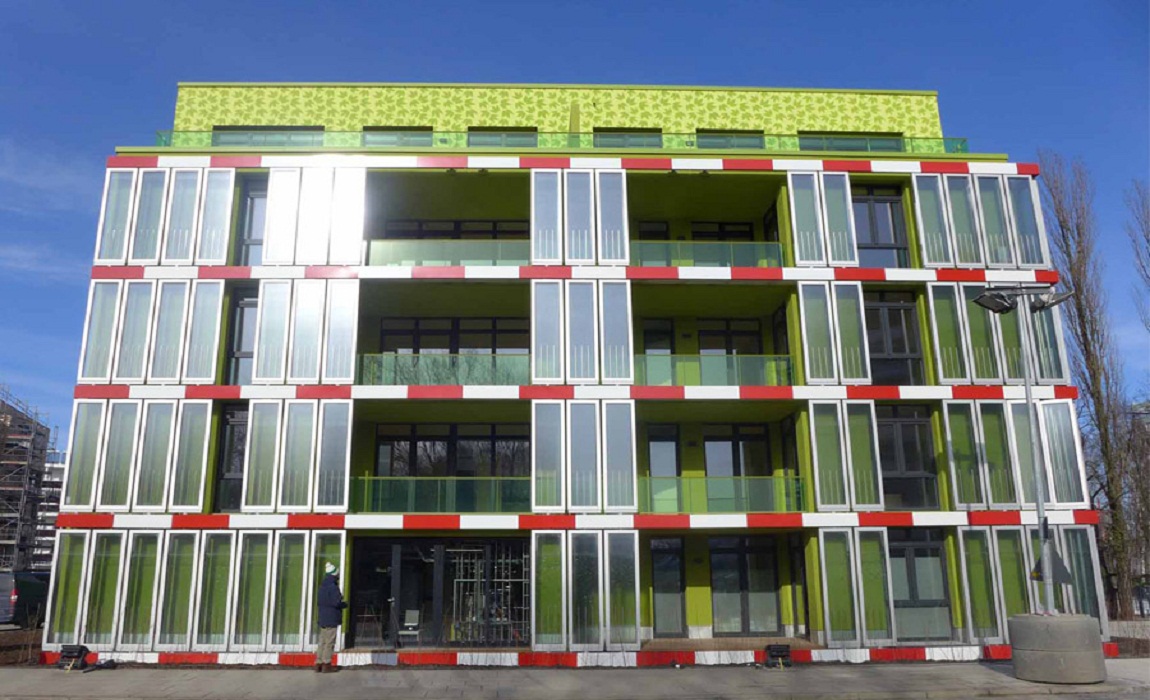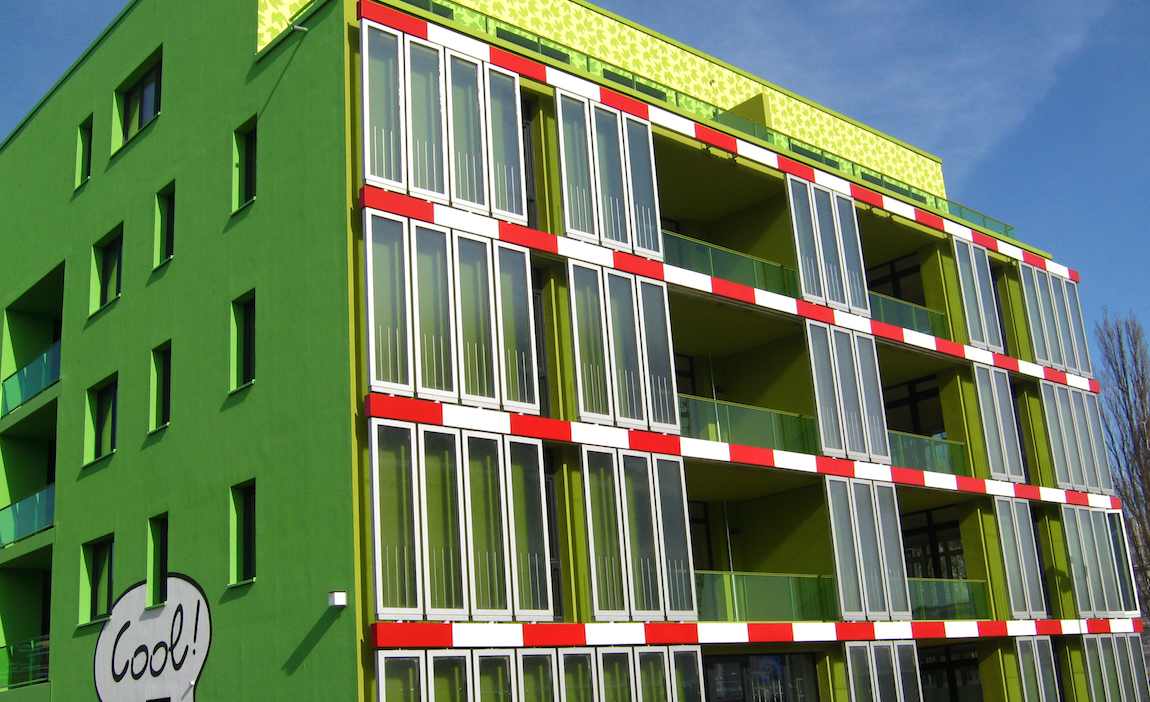World’s First Algae-Powered Building Opens Its Doors
The key to a sustainable future: slime.
Nickelodeon, the makers of You Can't Do That on Television, must have been onto something: slime may well hold the key to a sustainable future, if the creation of the world's first algae-powered building is any indication.
Titled BIQ (Bio Intelligence Quotient) House, the zero-energy apartment block opened at Hamburg's International Business Exhibition last week and is the product of collaboration between multinational company Arup (the brains behind the Sydney Opera House and the Pompidou Centre), Austria's Splitterwerk and Germany's Strategic Scientific Consulting.
Here's how it works: The southeast and southwest, sun-facing sections of the building's facade feature a 'second outer shell', which contains 129 glass bioreactors, filled with microalgae. A circuitous water supply provides the algae with carbon dioxide and liquid nutrients, which, in combination with sunshine, stimulate photosynthesis and growth.

Once the algae is dense enough, it is harvested and taken to a special room in the BIQ House, where it is fermented and utilised in the production of biogas, thus becoming a renewable energy source. In comparison with other land-dwelling plants, algae can create five times as much biomass (organic material that translates as fuel) per hectare.
Simultaneously, the facade functions a little like a solar thermal system. Any sunshine unneeded by the algae is transformed into heat, which can be used immediately or stored underground. Conventional needs are met, also, as the facade is a powerful source of shade and insulation, providing protection from cold, heat and noise.
The BIQ House is but one of many slimy possibilities for the future. Earlier this year, Arup's Foresight + Innovation team published It's Alive, a report outlining ideas for the built environment come 2050, when the global population will most likely number 9 billion and three-quarters of people will inhabit cities. Arup's vision incorporates "intelligent buildings that can make informed and calculated decisions based on their surrounding environment" and have the capacity to "produce food, energy and resources".
Via Inhabitat.





